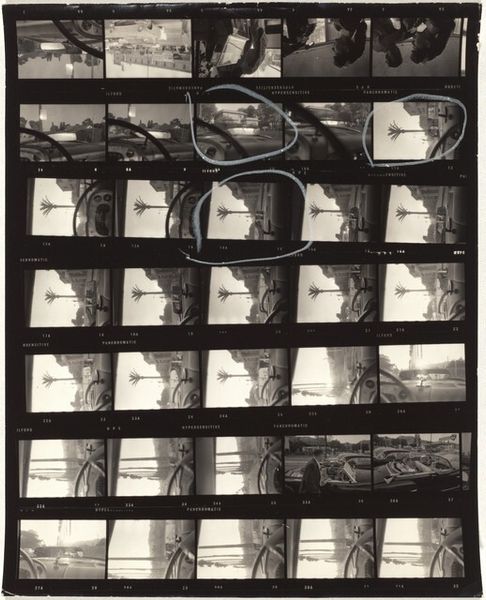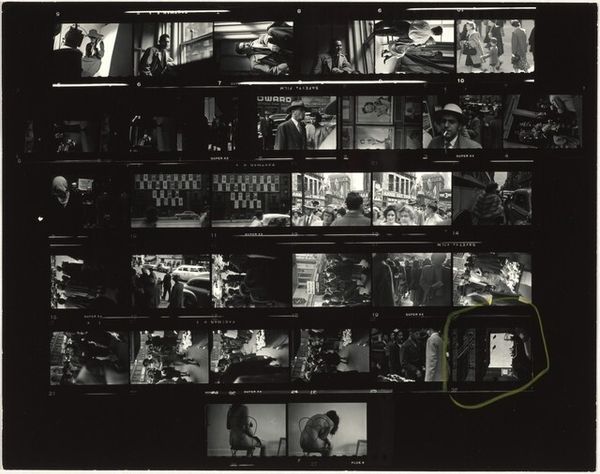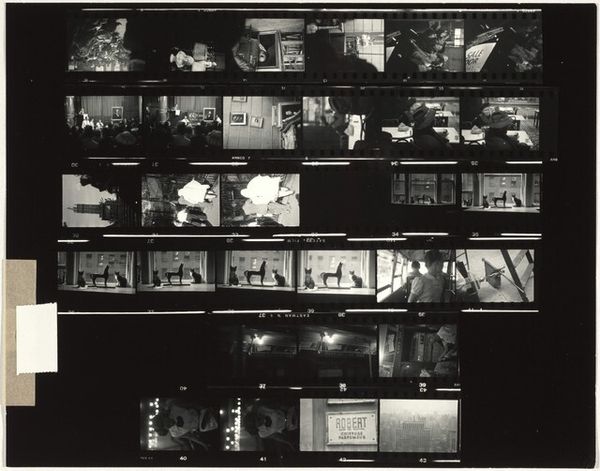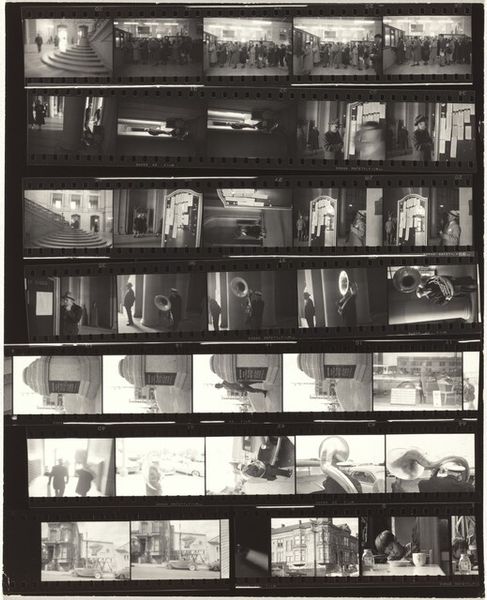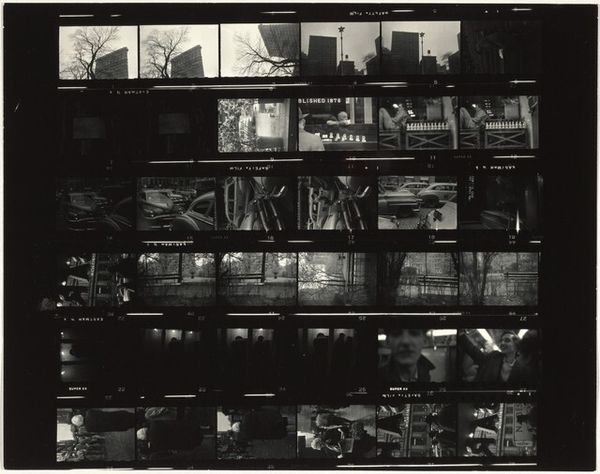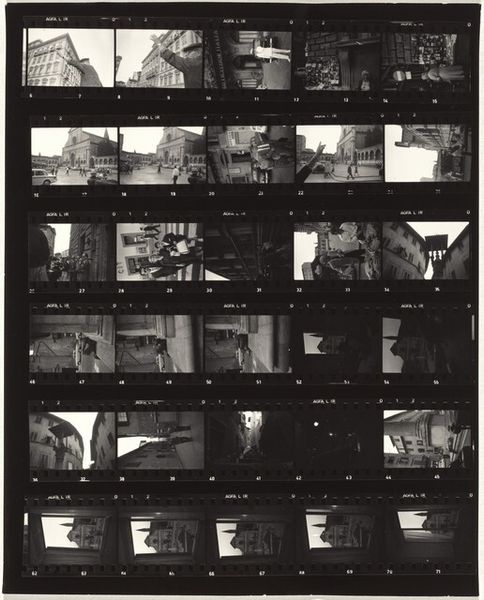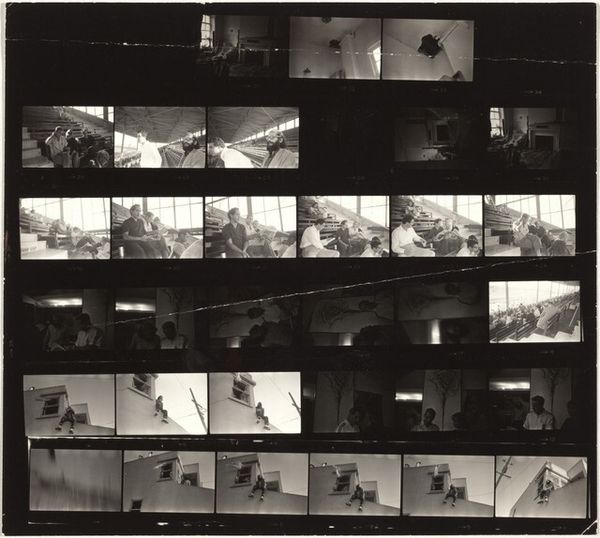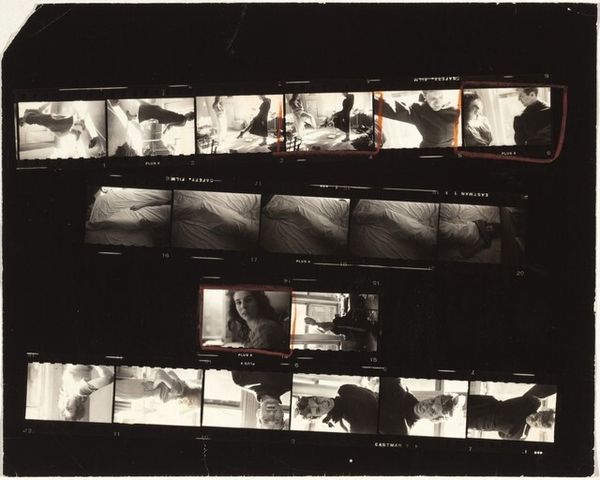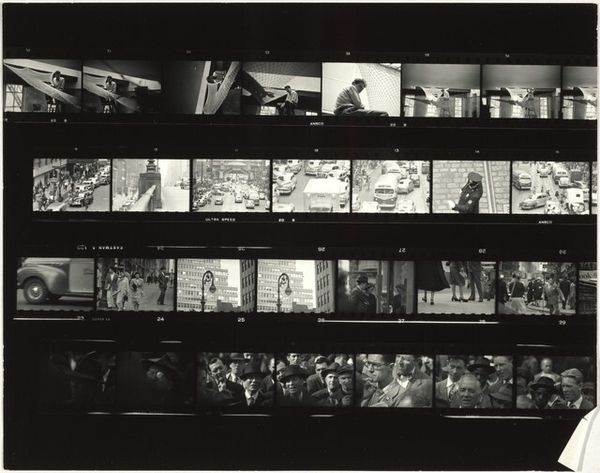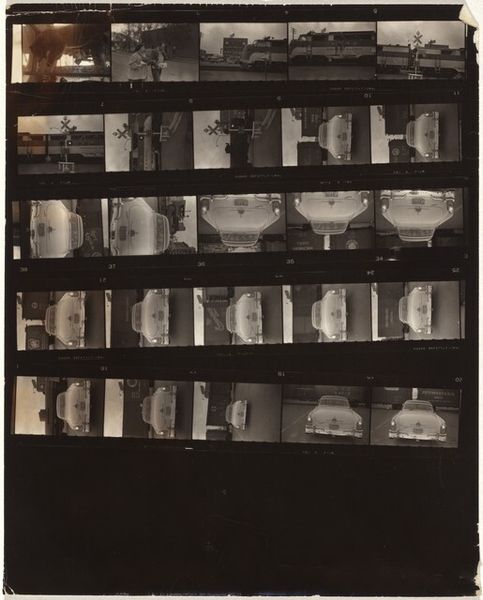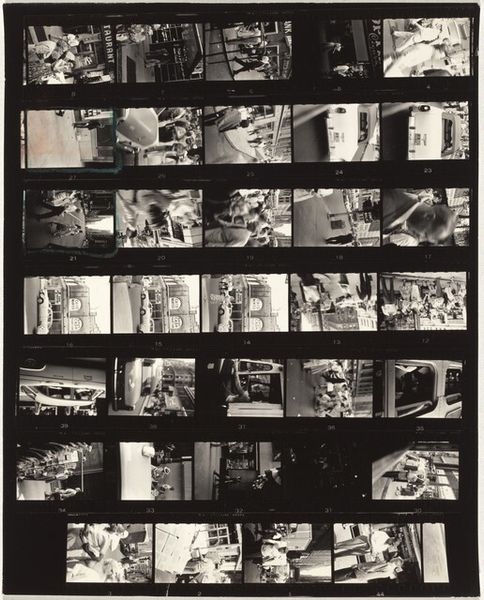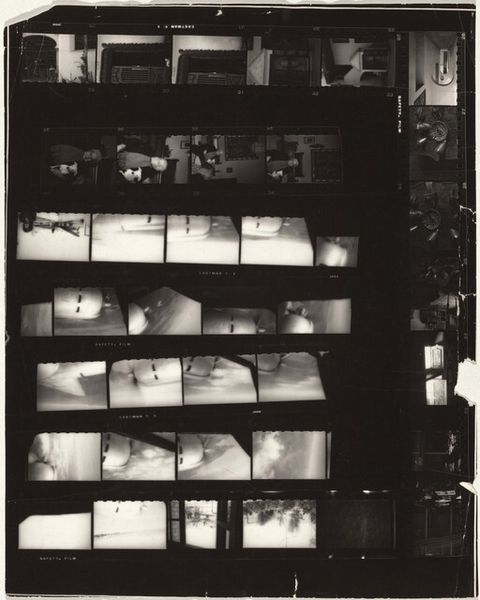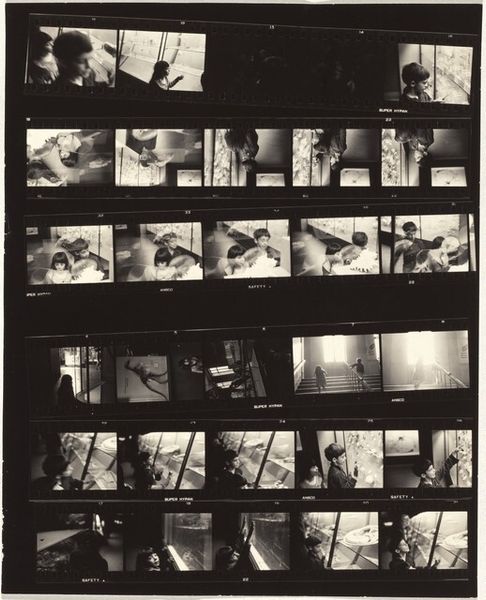
photography, gelatin-silver-print
portrait
abstract-expressionism
photography
visual diary
gelatin-silver-print
Dimensions: sheet: 20.3 x 25.3 cm (8 x 9 15/16 in.)
Copyright: National Gallery of Art: CC0 1.0
Curator: Here we have a gelatin silver print titled "40 Fotos, no number," a work that dates between 1942 and 1946 by Robert Frank. What jumps out at you initially? Editor: My first thought? Intimacy, yet also a kind of... detached voyeurism. It’s fragmented, almost like glimpses caught through different keyholes, wouldn't you say? Curator: Absolutely, it feels very much like a page from a personal journal. Looking at the composition, the panel with the eye especially strikes me. It feels exposed and vulnerable. It invites introspection. What’s your take? Editor: The proximity, the intense focus… It pulls you in, undeniably. But in terms of broader social narratives, I’m thinking about surveillance, about who is watching whom, and the power dynamics at play, particularly considering Frank’s later work documenting marginalized communities. Curator: That makes me think, what is Frank seeing? Is he revealing the observer and the observed, implicating all of us in this act of looking? I also see elements that echo back to Dada and Surrealism, using a very personal language of symbols. Editor: I think there’s an active conversation happening about representation and the gaze, considering the period in which it was made, particularly questions around power and the ethics of looking. And don't ignore the fabrics shown here! What's going on with textiles during WWII? What does fashion represent at that moment? What kind of questions can the photograph of that wall with the tiles be? The possibilities of interpretation feel vast! Curator: I can’t help feeling this offers a little window into Frank’s evolving view of the world as a younger man before his seminal work The Americans, an interesting meditation on visual memory and shifting perceptions. It’s the quiet before the storm, perhaps? Editor: Exactly! It urges us to interrogate not just what we see, but why we're looking in the first place and, most significantly, what assumptions we carry into that viewing. It pushes you into questioning your own lens when consuming the photograph.
Comments
No comments
Be the first to comment and join the conversation on the ultimate creative platform.
